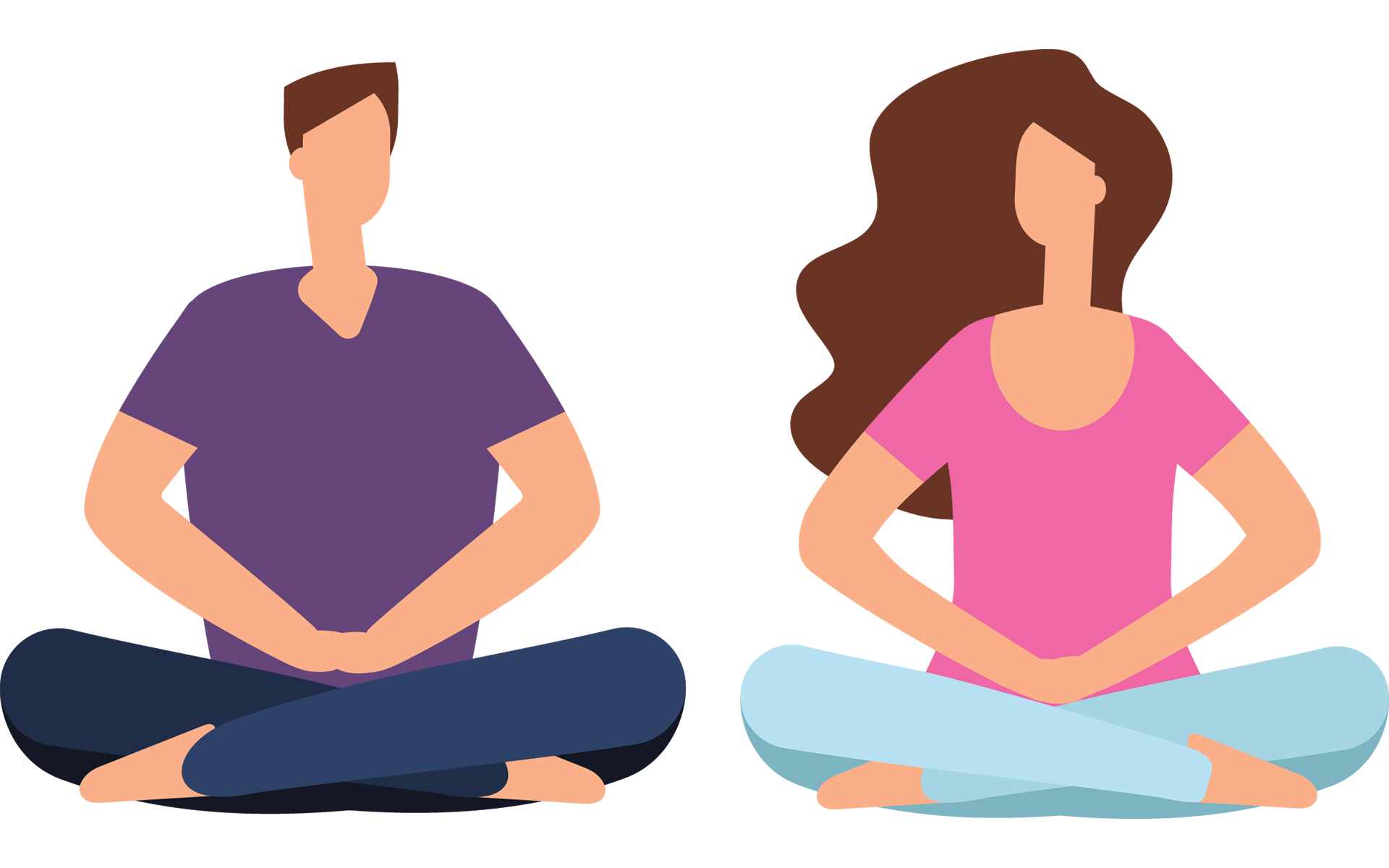
Relaxing with guided imagery can help you relieve stress. You can have a professional guide you through the process or you can practice it on your terms. The goal is to be in a relaxed state of mind and visualise a peaceful, relaxing scene. The scene can be anything you like, such as a tropical island or a lush forest. Once you are comfortable with the scene, you should try to avoid outside thoughts and breathe deeply.
Practicing guided imagery for relaxation is not difficult, but it can take some practice. Begin by setting up a comfortable, quiet environment that allows you to let your mind wander while not being distracted by the narrative. You could also listen to calming music and practice in silence. To anchor your experience you can also place your fingers on your chest. This will allow you to stay calm and focused. As you practice, you will become more comfortable with the practice and your stress levels will decrease.

Guided imagery can be used in a variety of ways, but it is not portable. It requires the ability to concentrate and imagination. Like any relaxation technique, guided imagery should be done in a private area. If you're unable to find a quiet place to do it, try a public restroom. In addition to the restroom, it is important to have a clean, dry place to do the process.
Guided imagery can be a wonderful way to manage stress and difficult situations. It allows you to relax and clear your mind. It can also be used to help with anxiety and manage difficult situations. This technique is used by pediatric psychologists to help children deal with illness and other stressful situations. To improve self-esteem, they can teach children how to use guided imaging exercises. It can be very effective in helping you to deal with difficult situations.
Guided imagery is a great way to relax. Use all of your senses and experience the area. Using all of your senses is essential in making this technique work. You will find it easier to relax the more detail you can think of. You may even feel the need to repeat it several times to get the desired effect. This will allow you to feel and see the exact same place you saw the first time.

The benefits of guided imagery are numerous. Guided imagery is great for stress reduction, memory enhancement and wellness. This technique can help you relax both mentally and physically. It can also help reduce anxiety and stress levels. It can help calm you down. You can also use imagery to help with anxiety. If you are feeling a little intimidated, you can always consult a professional to help you.
FAQ
Which lifestyle is best for your health?
The healthiest lifestyle to live is one where you eat healthy food, exercise regularly, sleep well, and avoid stress. This will ensure that you live a long healthy life.
Starting small can make a big difference in your diet, and even your exercise routine. To lose weight, you can start walking for 30 mins each day. You can also take up dancing or swimming if you are looking to be more active. You could also sign up to an online fitness platform like Strava, which tracks your activity.
How often should i exercise?
It is important to exercise for a healthy lifestyle. You don't have to exercise for a certain amount of time. It is important to find something that you enjoy and stay with it.
If you are working out three times a weeks, aim to do 20-30 minute of moderate intensity. Moderate intensity means you'll still be breathing hard after you've finished. This type of exercise burns approximately 300 calories.
You can walk for 10 minutes every day if that is what you prefer. Walking is low-impact and easy on the joints.
Jogging for 15 minutes three days a week is a good option if you prefer to run. Running is an excellent way to lose weight and tone your muscles.
You can start slow if you're new to exercise. Start with just 5 minutes of cardio a few times a week. Gradually increase the duration until you reach your goal.
What is the problem of BMI?
BMI stands to Body Mass Index. It is a measurement of body weight based on height. BMI is calculated using the following formula:
Divide the weight in kilograms by the height in meters squared.
The result can be expressed as a number between zero and 25. Scores between 0 and 25 indicate obesity. A score of 18.5 indicates overweight. A score of 23 indicates obesity.
A person who weighs 100 kg and has a height of 1.75 m will have a BMI of 22.
Why does weight change as we age?
How do you determine if your bodyweight is changing?
Weight loss occurs when there is less fat than muscle mass. This means that calories must be consumed at a rate greater than energy. Low activity levels are the most common cause for weight loss. Other factors include stress, illness and pregnancy. Weight gain is when there are more calories than muscle mass. It occurs when people consume more calories each day than they use. The most common causes are overeating, increased activity, hormonal changes, and excessive calories.
The primary reason we lose weight is that we consume less calories than what we burn. The main reason we lose weight is because we exercise more often. This increases our metabolism rate and burns more calories each day. This does not necessarily mean that we will get thinner. What is more important is whether or not our body is losing or gaining weight. Weight loss is possible if you burn more calories than you consume. But, if we consume far more calories than what we burn, then we actually store them as fat.
As we age we tend to be slower in moving and thus we don't move nearly as much. We also tend not to eat as much food as we used to when we were younger. We tend to gain weight. We also tend to look larger because we have more muscle.
Without weighing yourself each week, there is no way to know how much weight you have lost. There are many ways to determine your weight. You can check your waist size, your hips, your thighs, your arms, etc. Some people prefer to use a bathroom scale while others prefer to measure with tape.
To track your progress, weigh yourself once a week. Measure your waistline once per month. You can also take pictures of yourself every few months to see how far you've come.
You can also check your height online to find out how many pounds you have. For example, if you're 5'10" tall and weigh 180 pounds, you'd probably weigh 180 pounds.
Statistics
- Extra virgin olive oil may benefit heart health, as people who consume it have a lower risk for dying from heart attacks and strokes according to some evidence (57Trusted Source (healthline.com)
- According to the Physical Activity Guidelines for Americans, we should strive for at least 150 minutes of moderate intensity activity each week (54Trusted Source Smoking, harmful use of drugs, and alcohol abuse can all seriously negatively affect your health. (healthline.com)
- According to the 2020 Dietary Guidelines for Americans, a balanced diet high in fruits and vegetables, lean protein, low-fat dairy and whole grains is needed for optimal energy. (mayoclinichealthsystem.org)
- The Dietary Guidelines for Americans recommend keeping added sugar intake below 10% of your daily calorie intake, while the World Health Organization recommends slashing added sugars to 5% or less of your daily calories for optimal health (59Trusted (healthline.com)
External Links
How To
What does "vitamin" actually mean?
Vitamins can be described as organic compounds found in food. Vitamins are necessary for us to absorb nutrients in the foods we consume. Vitamins cannot come from the body so food must provide them.
There are two types of vitamins: water soluble and fat soluble. Water-soluble vitamins dissolve quickly in water. Examples include vitamin C,B1 (thiamine), B2 (riboflavin), B3 (niacin), B6 (pyridoxine), folic acid, biotin, pantothenic acid, and choline. Fat-soluble vitamins can be stored in the liver or in fatty tissue. Some examples include vitamin D and E, K, A and beta carotene.
Vitamins are classified according their biological activity. There are eight main groups of vitamins.
-
A - vital for healthy growth.
-
C - vital for proper nerve function, and energy production.
-
D – Essential for healthy teeth, bones and joints
-
E is necessary for good vision, reproduction.
-
K - Essential for healthy muscles and nerves.
-
P - essential for strong bones, teeth and tendons
-
Q – aids digestion of iron and iron absorption
-
R - Required for red blood cell production
The recommended daily intake (RDA), of vitamins varies with age, gender and physical condition. The U.S. Food and Drug Administration has established the RDA values.
For adults aged 19 and older, the RDA for vitamin B is 400 micrograms daily. Pregnant women require 600 micrograms daily to support fetal development. Children ages 1-8 require 900 micrograms per day. Infants below one year old require 700mg per day. But, between 9 months to 12 months, the amount drops to 500mg per day.
Children aged 1-18 years need 800 micrograms daily, while children overweight require 1000 micrograms per days. Children who are severely obese or underweight will need 1200 micrograms each day.
Children 4-8 years old who have anemia must consume 2200 micrograms of Vitamin C daily.
2000 micrograms per person is necessary for general health. Mothers who are pregnant, nursing, or have a high nutrient need will require 3000 micrograms a day.
Adults over 70 require 1500 micrograms each day, since they lose around 10% of their muscle mass every decade.
Women who are pregnant or lactating need more than the RDA. Pregnant women require 4000 micrograms daily during pregnancy, and 2500 micrograms every day after birth. Breastfeeding mothers require 5000 micrograms daily when breast milk production is occurring.